It has been 90 years since Salvatore Ferragamo left the U.S. to return to Italy to find the master craftsmen to realize his unique designs for high quality handmade shoes. His company is marking this milestone with an exhibition at the Salvatore Ferragamo Museum, called 1927 – The Return to Italy.

The Ferragamo Museum is one of the most creative in the world. This exhibit, curated by Carlo Sisi and designed by Maurizio Balò, sends visitors inside the Roma, the transatlantic ocean liner sailing from the United States to Italy in the 1920s, which carried Salvatore back to Italy. The exhibition seeks to convey the artistic and manufacturing atmosphere of Florence in 1927.
Salvatore Ferragamo was born in 1898 in Bonito, near Naples, the eleventh of 14 children. After making his first pair of shoes at age nine, for his sisters to wear on their confirmation, young Salvatore decided that he had found his calling. He always had a passion for shoes. After studying shoemaking in Naples for a year, Ferragamo opened a small store based in his parent’s home. In 1914, at age 16, he emigrated to Boston (in the belly of a much rougher ship than the Roma), where one of his brothers worked in a shoe factory.
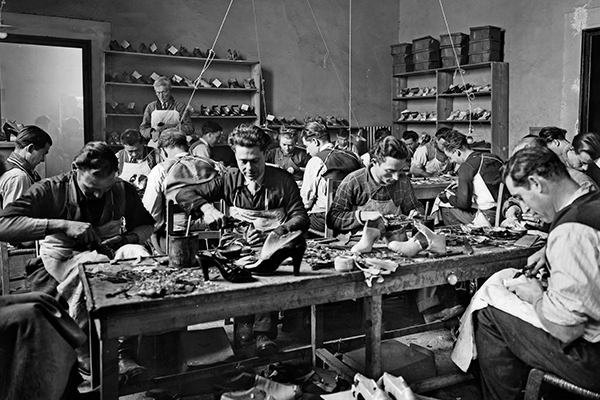
After a brief stint at the factory, Ferragamo convinced his brothers to move to California, first Santa Barbara then Hollywood. It was here that Ferragamo found success, initially opening a shop for repair and made-to-measure shoes, which soon became prized items among celebrities of the day, leading to a long period of designing footwear for the cinema. However, his thriving reputation as ‘Shoemaker to the Stars’ only partially satisfied him. He could not fathom why his shoes were so beautiful yet hurt the foot, so he proceeded to study anatomy at the University of Southern California.
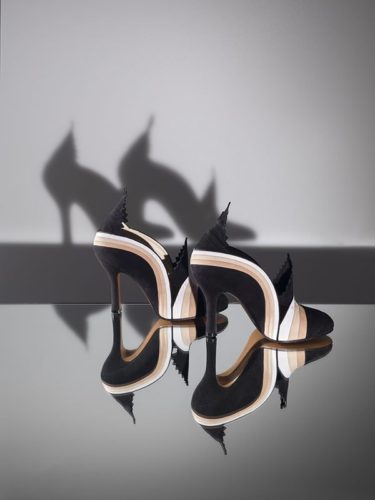
After spending thirteen years in the United States, Ferragamo returned to Italy on the Roma in 1927, this time settling in Florence, where he began to fashion shoes for the wealthiest and most influential women of the century with a workshop of Florentine shoemakers.
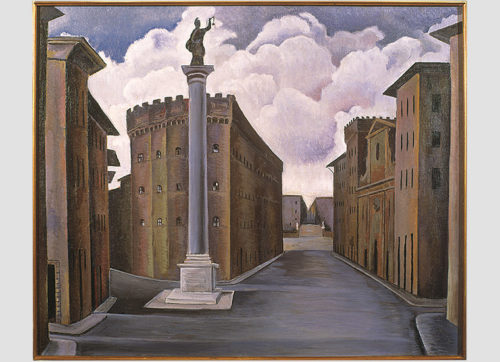
The exhibition fills eight rooms that recall the inside of the ship, where visitors can learn of Salvatore’s influences in artwork by Giovanni Colacicchi, Mino Maccari, Alberto Martini, Thayaht, Giò Ponti, Rosai, Balla and Fortunato Depero, as well as various pieces from Florentine ceramic manufacturer Richard-Ginori. As always, a film was created especially for the show.
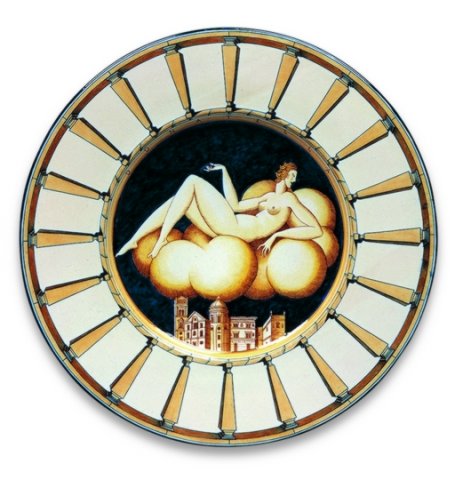
The exhibition, as described by the curator, “explores the various elements of Italy’s 20th century visual culture, taking from it the themes and works of art that directly influenced or indirectly informed the poetics of Ferragamo’s creations without overlooking the many cultural and social aspects that characterized the post-WWI period up to the eve of the Fascist regime’s authoritarian rise.” Along with the display of shoes there are the elegant artistic garments of the 20s and 30s and unique designs of printed fabric from the era, as well as finely crafted artistic objects, photographs and advertisements.
1927 – The Return to Italy
Museo Salvatore Ferragamo
Palazzo Spini Feroni, Piazza di Santa Trinita, 5/R, Florence
Until May 2, 2018, Open every day from 10am to 7:30pm
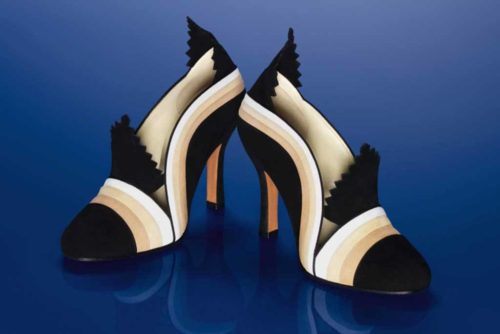
A new Salvatore Ferragamo Creations 1927 Capsule Collection was launched in conjunction with the opening of the new exhibition 1927 The Return to Italy at the Museo Salvatore Ferragamo. The six-piece capsule collection, $1,090 to $2,900, reproduces original Salvatore Ferragamo designs from this period.
